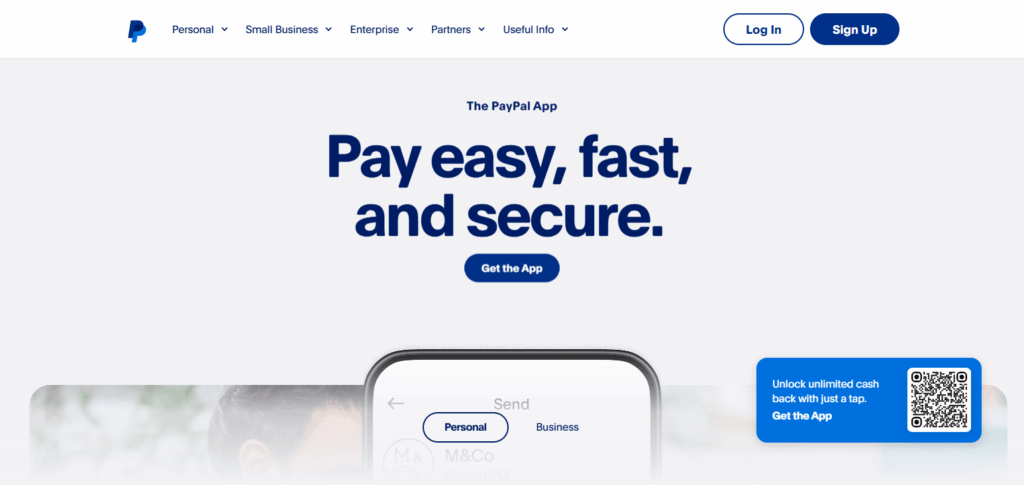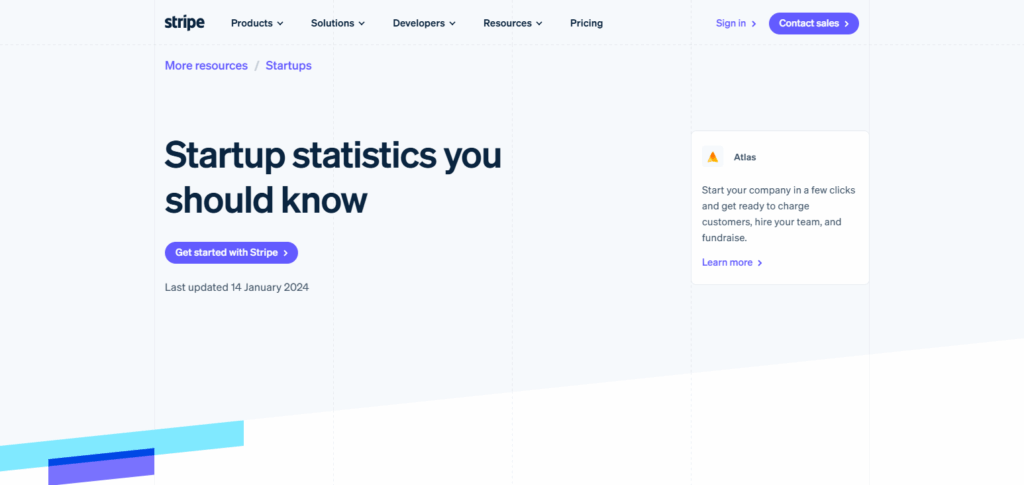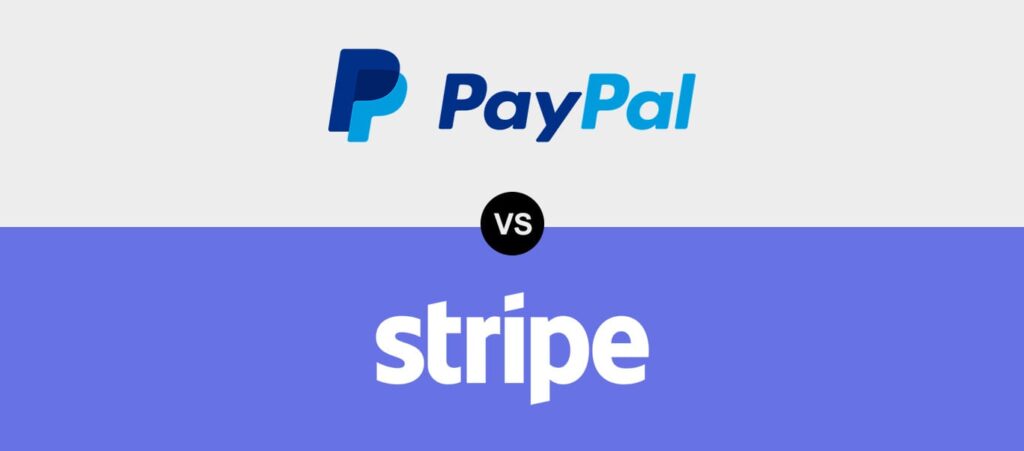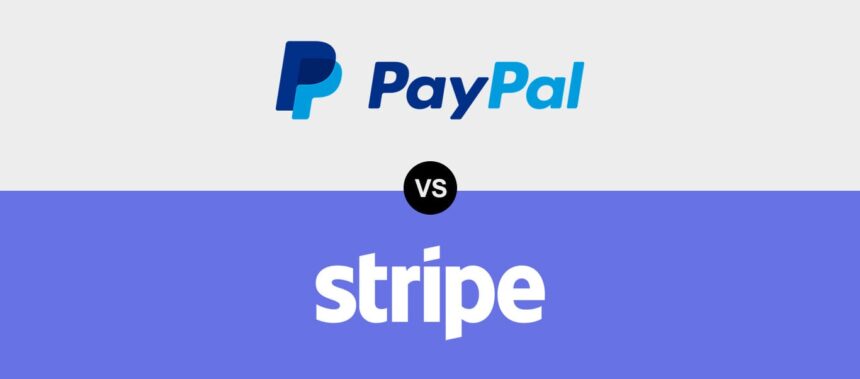In this article, I will examine the PayPal vs. Stripe Statistics, specifically their 2025 results for revenue, transaction volume, merchant count, fee structures, and security capabilities.
Comparing these two dominant payment gateways will help you assess which solution provides superior value, scalability, and features for businesses, developers, and international e-commerce ecosystems.
What Is PayPal?
PayPal is an internet-based payment service that lets people and businesses move money quickly and securely worldwide. Launched in 1998, the platform supports more than 25 currencies and operates in over 200 territories.

Users can connect bank accounts, credit cards, or hold balances in a PayPal wallet to pay and get paid with a few clicks. PayPal is trusted for its buyer and seller protection, making it the go-to choice for online shopping, freelance jobs, and sending money to friends—whether through websites, dedicated apps, or mobile devices.
What Is Stripe Statistics?
Stripe statistics offer a snapshot of how the company is performing in the digital payments landscape. Important figures include total payment volume, yearly revenue, number of active accounts, geographic footprint, and the pace of developer adoption.

By 2025, Stripe is celebrated for its smooth API connections, serving millions of online merchants in more than 40 nations. The data not only illustrates Stripe’s trajectory and dependability, but also positions it against rivals like PayPal, enabling businesses and analysts to gauge its market strength and innovation pace.
PayPal vs. Stripe Statistics – Key Differences
| Category | PayPal (2025) | Stripe (2025) |
|---|---|---|
| Founded | 1998 | 2010 |
| Active Users | 450+ million | Estimated 5+ million businesses |
| 2025 Revenue | $32+ billion (est.) | $20+ billion (est.) |
| Total Payment Volume (TPV) | $1.6+ trillion | $1+ trillion |
| Supported Countries | 200+ | 45+ |
| Transaction Fees | 2.9% + $0.30 (domestic, US) | 2.9% + $0.30 (domestic, US) |
| Ease of Integration | Moderate (plugin-based) | High (API-first, developer-friendly) |
| Primary Users | Consumers & merchants | Developers, startups, enterprises |
| Security Features | Buyer/seller protection, 2FA | Machine learning fraud detection, PCI Level 1 |
| Market Focus | B2C, Freelancers, Small Businesses | B2B, SaaS, Marketplaces, Enterprises |
Revenue and Financial Performance
PayPal
Full-year Revenue 2024: Approximately \$31.7 billion, reflecting slow 6.7% yearly increase.
First Quarter 2025 Revenue: \$7.9 billion; exceeded market consensus, delivering \$1.33 EPS.
2024 Net Profit: Roughly \$4.1 billion.
Total Payment Volume (TPV): About \$1.6 trillion across 429+ million active accounts.
Growth Catalysts: Expanded branded checkout (+6% transaction share), Fastlane checkout, and deeper Venmo monetization.
Stripe
Projected 2025 Revenue: Roughly \$19.4 billion with healthy 10.6% net margin.
Full-year 2024 Net Revenue: Volumes between \$3.8 billion and \$5.1 billion, translating to 34% year-on-year increase.
Total Payment Volume (TPV): Approximately \$1.4 trillion, representing 38% annual growth.
Annual Recurring Revenue (ARR): Exceeded \$6.1 billion, driven by enterprise software suite and payment services.
Profitability Status: 2024 first full year of profitability; trend expected to continue in 2025.
Growth Catalysts: Increased API usage, enterprise SaaS suite, Stripe Capital financing, and stablecoin payment introduction.
Fees and Pricing Structure
PayPal (2025)
Base Fee (US): 2.99% + \$0.49 for each domestic sale.
Cross-Border Sales: 4.4% + a fixed sum that varies by currency.
Currency Change Fee: 3% to 4% surcharge on the underlying rate.
Chargeback Cost: \$20 per case (regional variations possible).
Micro Transaction Rate: 4.99% + \$0.09 for very low-cost items.
Price Breaks: Limited; larger volume discounts via Braintree only.
Ideal Users: Small businesses, freelancers, and individual sellers.
Stripe (2025)
Base Fee (US): 2.9% + \$0.30 per domestic transaction.
Cross-Border Sales: +1% for currency conversion, +1% for foreign cards.
Custom Rates: Offered to platforms and businesses with high volume.
Subscriptions: Built-in recurring billing, pay only the cut per transaction.
Chargeback Cost: \$15 per case, refunded if the merchant wins.
Development Flexibility: Create any billing structure with APIs.
Ideal Users: SaaS companies, marketplaces, platforms, and larger merchants.
Security, Fraud Detection & Compliance

PayPal (2025)
Regulatory Compliance: Meets PCI-DSS Level 1, aligned with GDPR and CCPA mandates.
Buyer & Seller Protection: Automatic purchase protection for buyers, structured dispute resolution for sellers.
Fraud Detection Tools: Combines proprietary models, device fingerprinting, and round-the-clock risk monitoring.
Authentication: Supports two-factor authentication and tokenized logins for extra security.
Chargeback Management: Offers manual and automated dispute responses; flexibility is somewhat limited.
Global Compliance: Operates under licenses in over 100 regions, respecting local statutes.
Weakness: Higher incidence of fraud reports on consumer-centric services like eBay and Venmo.
Stripe (2025)
Regulatory Compliance: Achieves PCI-DSS Level 1, GDPR, CCPA, and ISO 27001 certification.
Radar Fraud Detection: AI-driven fraud prevention, leveraging learnings from billions of transactions worldwide.
Dynamic Risk Scoring: Adapts fraud protection layers based on evolving transaction signals and user actions.
Built-in Tokenization: Encrypts card details both during transactions and in data storage.
Custom Rules: Vendors can define precise fraud criteria, tuning detection through dashboard or API.
Real-Time Monitoring: Conducts ongoing threat evaluation and flags anomalies instantly.
Conclusion
By 2025, PayPal and Stripe still stand as the two giants of digital payments, each shining in its own lane. PayPal takes the crown for the biggest user numbers, the highest transaction totals, and the strongest consumer confidence.
That makes it perfect for individuals, freelancers, and small businesses who want a straightforward, trusted checkout. Stripe, meanwhile, keeps its momentum by winning over developers, landing bigger enterprise clients, and pushing the envelope with API-first features.
That draws in SaaS businesses, online marketplaces, and any company that needs a customizable payments engine. Your best bet comes down to what you value more: the simple, large-scale reach of PayPal or the tailor-made flexibility of Stripe.
FAQ
Which has more users, PayPal or Stripe in 2025?
PayPal leads with over 429 million active accounts, while Stripe powers millions of businesses but does not publicly disclose user counts.
Who processed more payments in 2025?
PayPal processed around $1.6 trillion, slightly higher than Stripe’s $1.4 trillion, though Stripe showed faster growth at 38% YoY.
Which platform has higher revenue in 2025?
PayPal leads with ~$32 billion in estimated 2025 revenue. Stripe follows with ~$19.4 billion, showing strong profitability and enterprise expansion.









